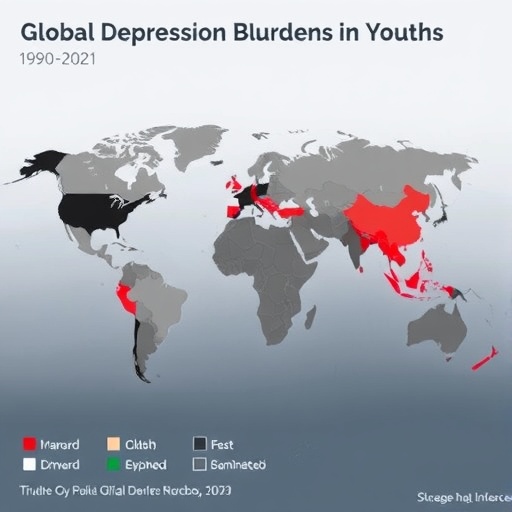The global burden of depression in adolescents and young adults, 1990–2021: systematic analysis of the global burden of disease study
BMC Psychiatry
volume 25, Article number: 767 (2025)
Background
Depression is a leading cause of disability among adolescents and young adults, yet comprehensive assessments of its global burden and associated risk factors in this population remain limited. This study aimed to evaluate the global, regional, and national trends in depression burden among individuals under 30 years of age from 1990 to 2021, and to identify key risk factors and disparities.
Methods
We analyzed data from the Global Burden of Disease Study 2021, focusing on depression incidence and disability-adjusted life years (DALYs) among individuals aged under 30. Temporal trends were assessed using an age-period-cohort (APC) model. We further examined trends using estimated annual percentage change (EAPC), frontier analysis, and inequality metrics to provide a comprehensive evaluation.
Results
From 1990 to 2021, both the incidence of depression and related DALYs in individuals under 30 increased by over 50%. Males experienced a larger proportional increase, although females had an age-standardized incidence rate (ASIR) 23 times higher than males in 2021. The highest burden was observed in the 20–24 age group, while the fastest growth occurred among those aged 15–19. Individuals born after 2000 showed a higher prevalence of depression. High sociodemographic index (SDI) regions—particularly high-income North America and Greenland—had the highest ASIR and age-standardized DALY rate (ASDR). The most prominent risk factors were bullying victimization (61.8%), childhood sexual abuse (12.0%), and intimate partner violence (12.6%). Notable regional disparities were observed, with countries like Switzerland, Norway, Monaco, and Germany showing rapid increases in depression burden.
Conclusions
The burden of depression among young people has risen substantially over the past three decades, with disproportionate impacts on females, post-2000 birth cohorts, and those in high-SDI regions. Interventions targeting modifiable risk factors—particularly bullying, childhood abuse, and intimate partner violence—are essential to reduce the burden. Tailored, region-specific strategies are necessary to effectively address disparities and improve mental health outcomes in youth.
Liu, Z., Kuai, M. The global burden of depression in adolescents and young adults, 1990–2021: systematic analysis of the global burden of disease study.
BMC Psychiatry 25, 767 (2025). https://doi.org/10.1186/s12888-025-07201-8
https://doi.org/10.1186/s12888-025-07201-8 bu içeriği en az 2000 kelime olacak şekilde ve alt başlıklar ve madde içermiyecek şekilde ünlü bir science magazine için İngilizce olarak yeniden yaz. Teknik açıklamalar içersin ve viral olacak şekilde İngilizce yaz. Haber dışında başka bir şey içermesin. Haber içerisinde en az 12 paragraf ve her bir paragrafta da en az 50 kelime olsun. Cevapta sadece haber olsun. Ayrıca haberi yazdıktan sonra içerikten yararlanarak aşağıdaki başlıkların bilgisi var ise haberin altında doldur. Eğer bilgi yoksa ilgili kısmı yazma.:
Subject of Research:
Article Title:
Article References:
Liu, Z., Kuai, M. The global burden of depression in adolescents and young adults, 1990–2021: systematic analysis of the global burden of disease study.
BMC Psychiatry 25, 767 (2025). https://doi.org/10.1186/s12888-025-07201-8
Image Credits: AI Generated
DOI: https://doi.org/10.1186/s12888-025-07201-8
Keywords




